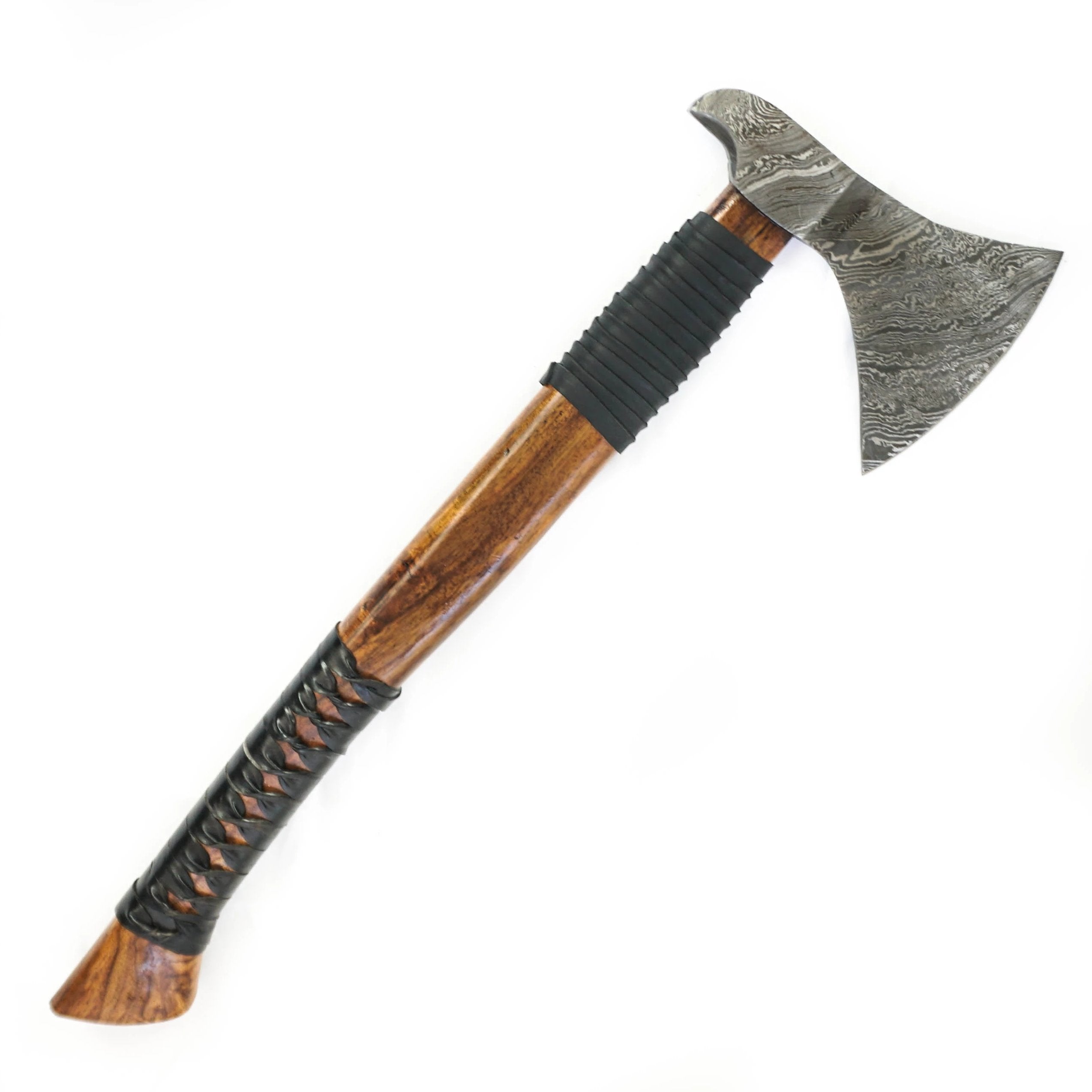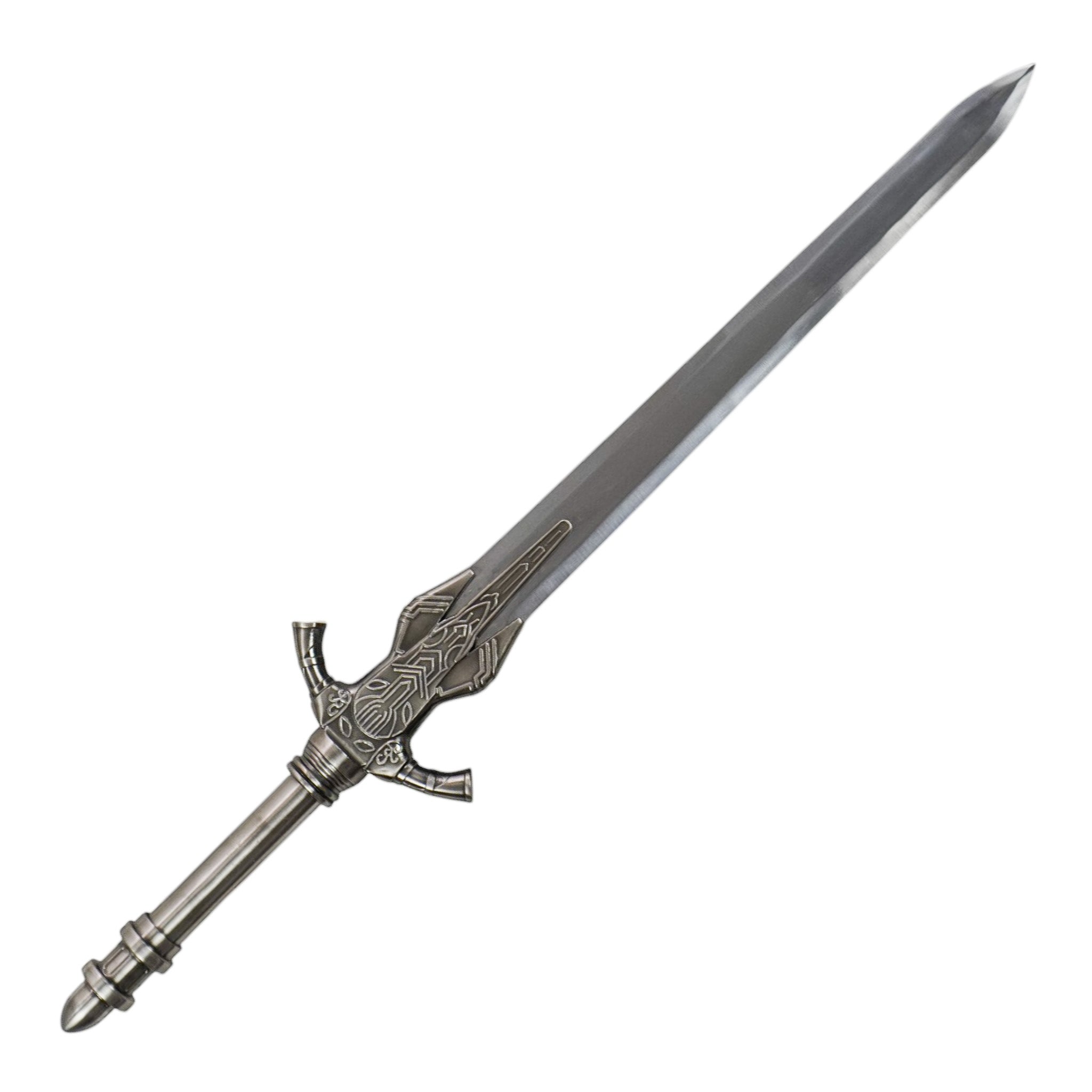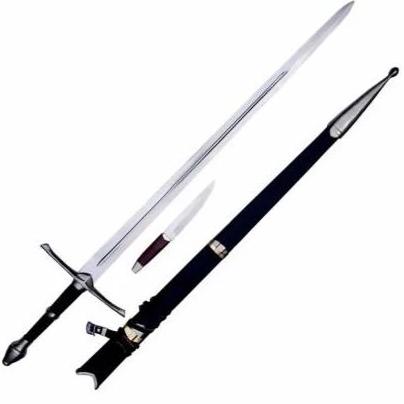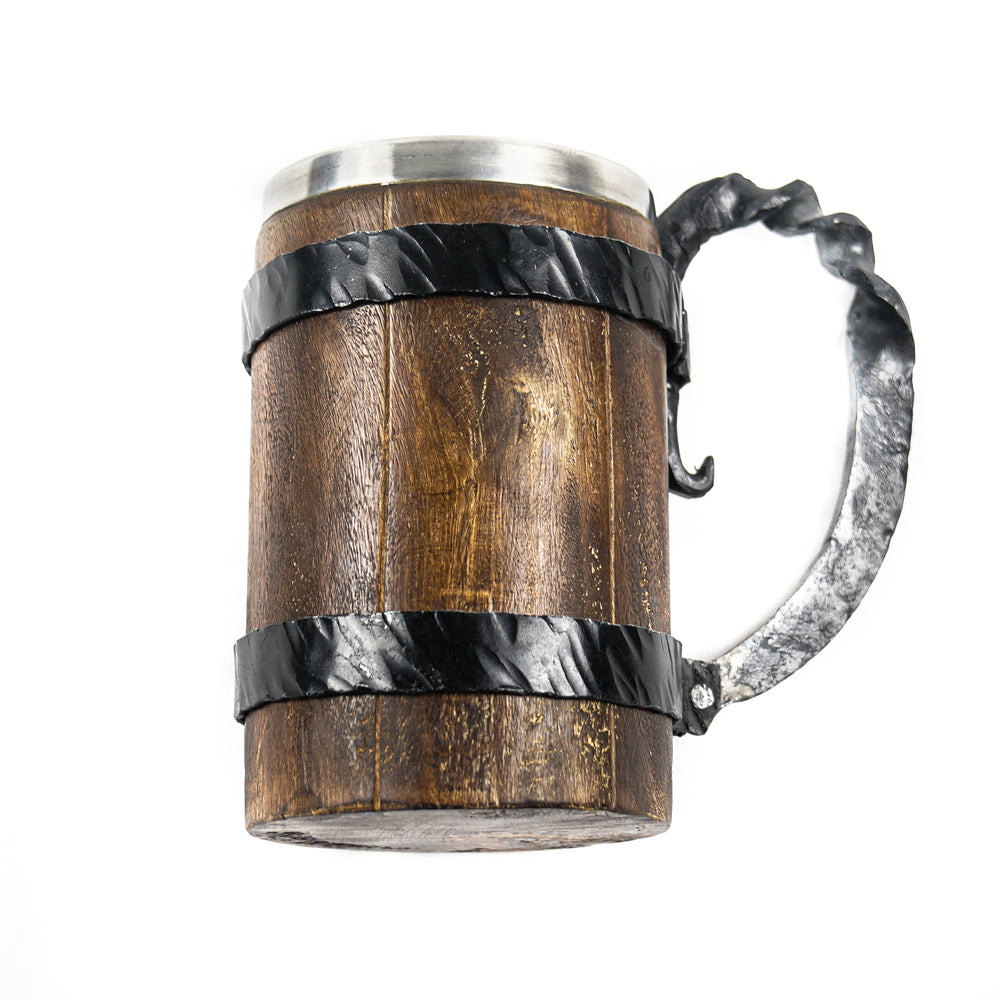The Claymore Sword: A Symbol of Scottish Heritage
The claymore sword holds a distinguished place in Scottish history and culture, representing the valor and martial tradition of the Scottish Highlands.
Historical Significance:
- Evolving Use: Starting in the 15th century, the claymore was a symbol of Scottish warriors and was used effectively through the 17th century.
- Basket Hilt Variant: The unique basket hilt design provided protection for the hands, combining both defensive and offensive elements—a design innovation that parallels the development of the rapier.
- National Symbol: After the Acts of Union in 1707, the claymore became a potent symbol of Highland pride and military prowess, remaining in ceremonial and combat use until the 19th century.
Blade Craftsmanship:
- Damascus Steel Construction: True to its legendary form, this replica is crafted from pattern-welded Damascus steel, providing both beauty and functionality.
- Layered Steel Composition: The 352 layers of steel in the blade ensure exceptional strength, allowing the sword to hold a keen edge and resist the stresses of combat simulation or display.
Design and Aesthetics:
- Two-Handed Sword Structure: As a large two-handed weapon, this claymore is reminiscent of the traditional longswords, designed for powerful swings and reach advantage.
- Forward Sloping Hilt: This distinctive feature gives the claymore its recognizable silhouette and may have provided ergonomic benefits in combat.
Handle and Ergonomics:
- Material Detail: The handle is crafted from stag horn with Damascus steel bolsters, which offers a historical feel and ensures a sturdy grip.
- Overall Length: The impressive 44-inch length makes this sword a striking piece, commanding attention and respect.
Protection and Portability:
- Leather Sheath: A leather sheath accompanies the sword, providing protection for the blade and ease of carrying for the owner.
Conclusion:
This Claymore Sword, with its high carbon Damascus steel and traditional design, is not only a weapon of historical importance but also a work of art. The combination of materials and craftsmanship results in a piece that is both a collector's dream and a tangible connection to Scotland's warrior past. It serves as a reminder of the skill and strength that the original claymore-wielding Highlanders embodied.

















